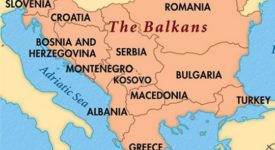Since 2014, European citizens have been engaged in an intensifying discussion about migration. This is the result of an unprecedented increase in the number of refugees and other migrants entering Europe, particularly the Syrian war refugees. Migration peaked in 2015, when more than one million people arrived in Europe, a large proportion of them having travelled along the eastern route through Turkey, Greece, and the Balkans. The number of arrivals has fallen significantly since 2016, albeit with more than 160,000 people reaching Europe through Mediterranean routes annually.
Due to their geographical position, countries such as Italy, Greece, and Spain have been most affected. The bad thing is that this growth in the number immigrants has created the perception of an unmanageable crisis, creating a stigma among the general public. This had a great influence on elections held in Austria, France, Germany, Italy, and other European countries in the past year, boosting support for populist and Eurosceptic parties. Yet, many Europeans are unaware of the challenges migrants face before even reaching Europe. A large proportion of them come from sub-Saharan African countries, from which they embark on a long journey, being forced to endure extreme conditions, during which some of them die.
Niger is the main migration hub on the route to North Africa. The agreements with the Economic Community of West African States (ECOWAS) allow people to move freely within Western Africa up to Niger. However, from Niger northward, migrants are branded as “illegal”, which means they are forced to rely on smugglers and traffickers to reach Libya and Algeria. Migrants often travel to Europe due to armed conflicts, but there are also other factors, most notable the Africa’s population boom.
The population on the African continent will double over the next 30 years because of very high fertility rates. There is the opposite trend in Europe, which will have to address the challenges posed by an ageing population if it wants to maintain its current levels of prosperity. Beyond demographics, there are several other drivers of migration. Climate change, local terrorism, extreme poverty, food insecurity, and the predatory behavior of authoritarian regimes also prompt people to flee in a search for a new home.
As European citizens have become increasingly sensitive to the issue of migration, governments have tried to provide immediate solutions to what is a long-term, structural shift. This led to Niger becoming one of the first countries the EU engaged with, due to its position at the heart of migration routes. European countries’ activism in Niger involved the deployment of French and US troops there, along with activities at a German base in Niamey and the deployment of Italian soldiers in Madama (the last outpost for migrants travelling north before they reach Libya).
Moreover, the EU has also pushed the Nigerien government to adopt new law, which criminalizes people smuggling. EU had good intentions, however, this has had an opposite effect: the law destroyed the livelihoods of hundreds of people without providing them with alternatives. As such, the law has exacerbated poverty and pushed migrants towards more dangerous routes and services.
Despite widespread perceptions of Europe as having been invaded by migrants, the data show that European countries contain relatively small numbers of asylum seekers and refugees. During the last six years, Germany has by far received more asylum applications than any other member state, followed by Italy and France. On average, around 40% of asylum applications are accepted through the recognition of refugee status, or humanitarian or subsidiary protection. Although these factors may explain the rise of nationalist and Eurosceptic parties in countries where elections have recently taken place, public perceptions of migration are often inaccurate.
The lack of a clear, shared EU policy is therefore the first obstacle to a long-term structural solution to the migration challenge in Europe and the sluggishness of asylum procedures is another. As there is no common asylum procedure in the EU, every member state adopts different standards. A thorough reform of the asylum system could help the countries most affected by migration to speed up their decision procedures, preventing them from becoming bogged down by old applications, while still processing new ones.
‘Migration Through the Mediterranean: Mapping the EU Response’ – Analysis by an ECFR Team – European Council on Foreign Relations / ECFR.
(The Analysis can be downloaded here)






